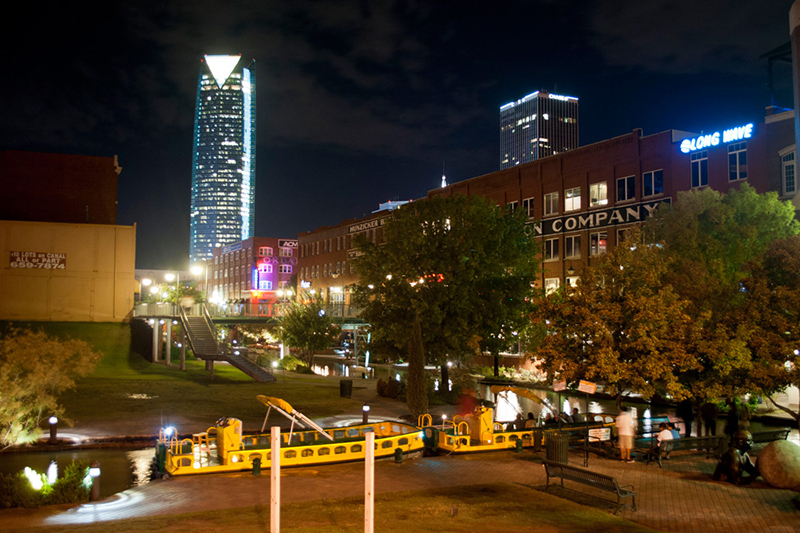Cities are working to un-do the damage of car-centric design by making the streets (and sidewalks and public spaces) a more welcoming place for residents.
This approach is not just happening in places like New York, recognized for its Active Design Guidelines developed under then-Mayor Michael Bloomberg’s administration. Oklahoma City is in the midst of its own $777 million MAPS 3 initiative to redesign its streets and create new public spaces that encourage more activity from residents.
Oklahoma City joined the ranks for healthy design cities following a city-wide weight-loss campaign, “This City is Going On A Diet.” The campaign began in 2007 and met its goal in 2012. The mayor, Mick Cornett, led by personal example, dropping 38 pounds during the challenge period. Now in his fourth term, he’s looking to lead with policy to keep the city’s weight off.
“The success of the awareness campaign led me to believe that the message had penetrated enough that we could get voter’s approval to start redesigning the city around people, not cars,” Cornett told Co.Exist in a phone interview. “I’d realized we’d built an incredible quality of life here–if you happened to be in a car.”
Cornett is seizing on a new approach to urban design, one championed by Dr. Richard Jackson, a physician and expert in the way in which infrastructure impacts health.
“We have engineered activity out of American life,” Jackson told The Washington Post.
Oklahoma City is now undertaking a variety of efforts to engineer greater activity back into people’s lives. MAPS 3—funded by a limited term, one-cent sales tax initiative that began in April 2010 and ends in December 2017—is a 10-year program created to finance eight projects, from convention centers and public parks to more modern transit, trails and sidewalks. It will raise an estimated $777 million over its lifetime.
In October, city officials broke ground on a new 279,000-square-foot building at State Fair Park and another 11-acre whitewater rafting and kayaking center.
“Not only will the center be a playground for people of all ages and skill levels, but it will also double as a training center for Olympic hopefuls. This attraction will continue our efforts to create a city where people want to live and encourage residents to adopt an active outdoor lifestyle,” Cornett said in a press release about the kayak facility.
That’s the other thing about Oklahoma City’s active design approach: there’s a financial upside. Cornett told Fast Company that his city is competing with other U.S. cities to attract well-educated millennials who will drive the future economy and make or break cities in the process.
Active design, millennial bating, whatever you want to call it. Cities like New York and, yes, Okahoma City are re-evaluating how public space can improve quality of life for current residents and attract new ones.
Source: Urbanful
November 5, 2014
By Shaun Courtney, Images courtesy of Josue Goge and lightrailnow.org
http://urbanful.org/2014/11/05/how-oklahoma-citys-diet-sparked-more-active-urban-spaces/?utm_source=Urbanful+Master+List&utm_campaign=b75220e8c5-November_7_Weekly_Subscribers&utm_medium=email&utm_term=0_fdf64fbc84-b75220e8c5-197298513












